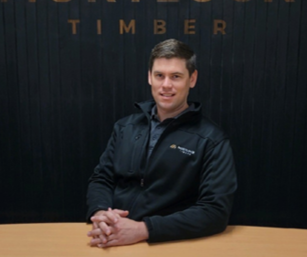Composite Cladding vs Timber Cladding
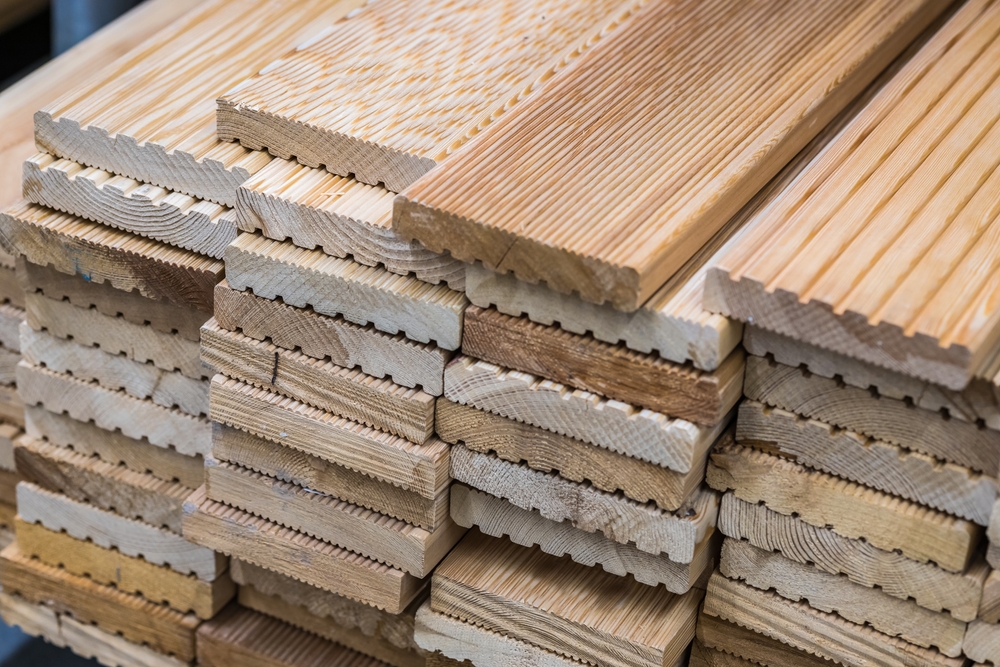
Selecting the right cladding material is a pivotal decision in any architectural project, impacting not just the aesthetic appeal but also the durability, maintenance, and overall cost of the structure.
Today, we compare composite cladding vs timber cladding to equip you with all the necessary information to help you make the best choice for your next project. Whether you’re an architect, a builder or a homeowner, this guide will assist you with selecting the ideal cladding material.
Aesthetic appeal
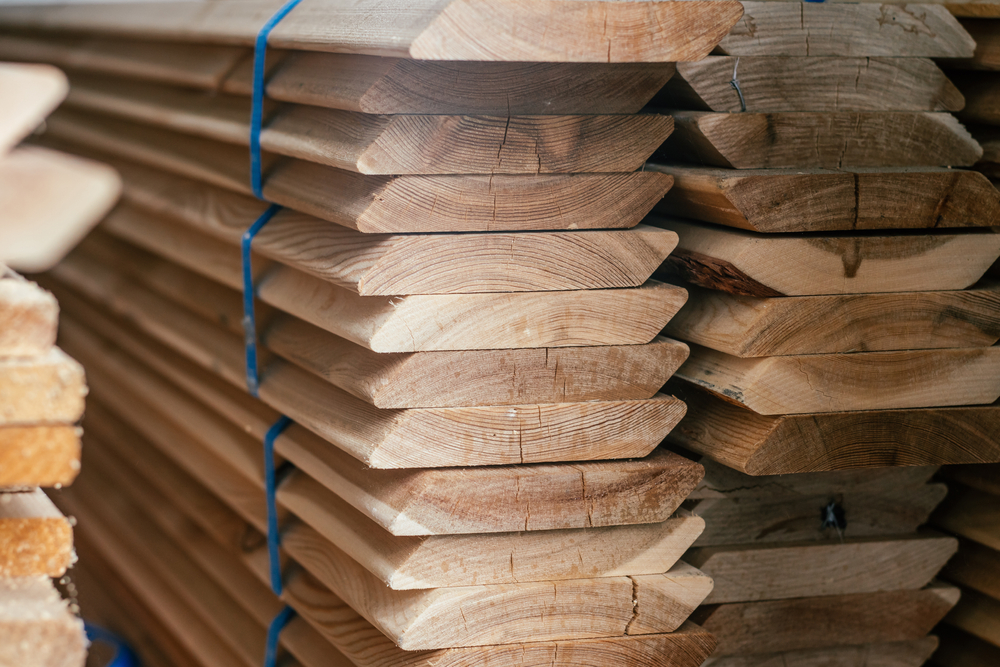
Timber cladding
Timber cladding stands out for its inherent natural beauty. Each piece of timber tells a unique story through its grain patterns, textures, and colour variations. Woods like Blackbutt, Jarrah, and Pacific Teak showcase a spectrum of colours and textures that provide a warm and inviting appearance.
Natural timber complements other materials such as metal, glass and stone, offering a balance between natural and man-made elements. It can also be treated with various finishes to enhance its appearance and texture to suit specific design needs. This diversity ensures that no two installations are exactly alike, offering an exclusive and bespoke aesthetic.
Composite cladding
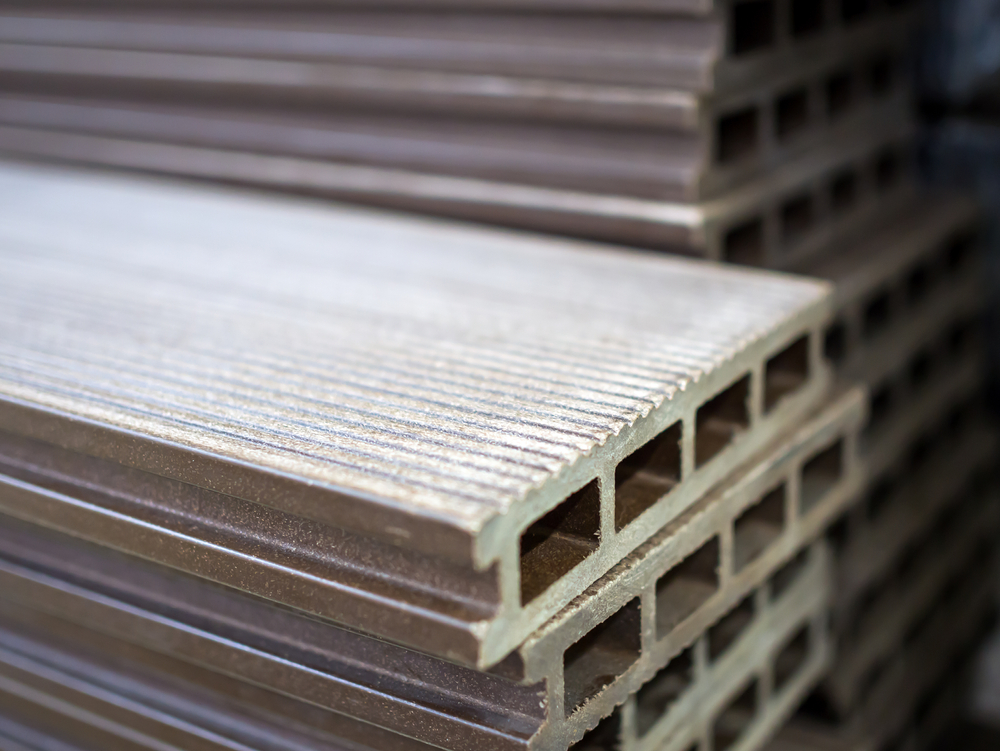
Composite cladding serves as a synthetic alternative to timber cladding and offers a more uniform and contemporary look. Composite cladding is manufactured to have consistent colours and textures, which appeals to those looking for uniformity and predictability in their design.
Composite timber also comes in a variety of colours and finishes, offering flexibility to suit a wide range of architectural styles. Moreover, composite materials can mimic the look of natural wood, but they lack the unique tactile and visual variations of real timber.
Durability and maintenance
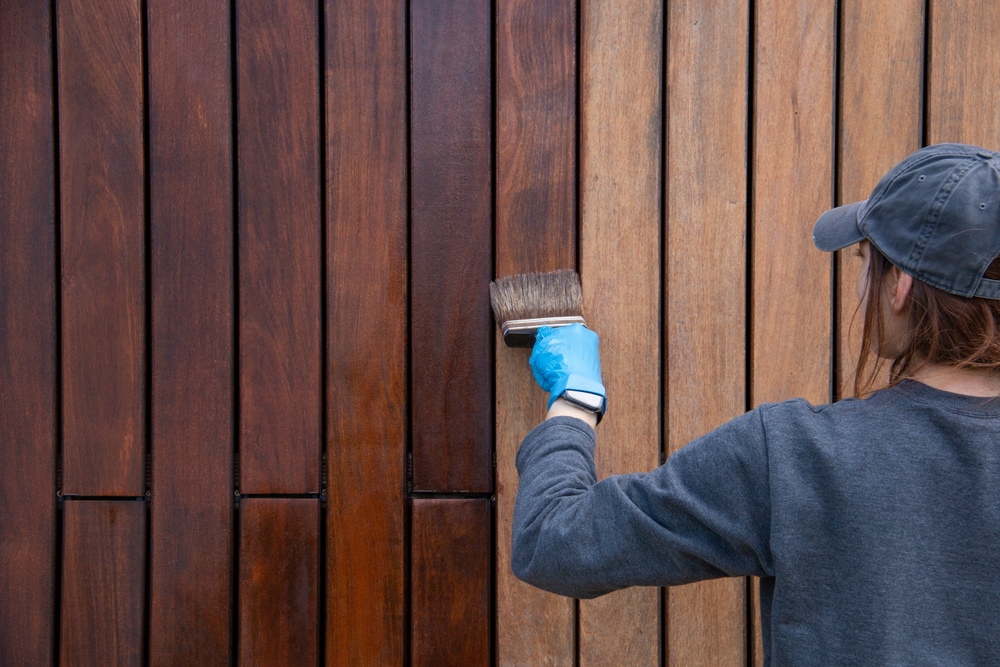
Timber cladding
When you opt for natural timber, it’s important to select high-quality durable species, like those offered by Mortlock Timber, that boast impressive longevity.
Hardwoods such as Ironbark, Spotted Gum and Pacific Teak are particularly known for their natural resilience against environmental factors such as weathering, rot and insects.
To mitigate the risk of insect damage, it’s important to treat natural timber with preservatives that penetrate deep into the wood. This provides long-lasting protection against termites and other wood pests.
Overall, there are many ways to maintain timber cladding’s structural integrity and mitigate any pest activity. These include thoughtful design and installation practices, regular maintenance, and treatments with sealants or oils.
At Mortlock Timber, we can suggest the most appropriate timber species, treatments and preventative measures for your specific environmental conditions so you can enjoy the beauty and durability of natural timber cladding.
Composite cladding
Composite cladding is known for its durability and low maintenance. As a synthetic product, it’s made from a blend of wood fibres and plastic. Composite cladding is designed to withstand harsh weather conditions without the same level of upkeep required for natural wood.
The maintenance of composite cladding is relatively minimal. Simple cleaning, usually with just soap and water, is sufficient to maintain its appearance.
Fire resistance
Timber cladding
While natural timber isn’t inherently fire resistant, certain types of timber, such as hardwood, have fire-retardant properties due to their density and composition.
To optimise the fire resistance of natural timber, there are certain design and installation methods like using thicker cladding boards, implementing fire stops and ensuring proper ventilation in indoor spaces.
There are also treatments and coatings available which can improve the fire resistance of natural timber. For example, our Fireshield Intumescent Timber Coating is a valuable option for achieving group 1 or group 2 fire ratings without altering the timber’s original look.
Fireshield coating was applied to the recently completed Parramatta Aquatic Centre project which needed to achieve a group 1 rating. Visit our website for more details about the project.
Composite cladding
Composite timber is generally more fire resistant than natural timber due to the materials and manufacturing processes used in composite timber products. These materials include a mix of wood fibres and plastic which can be treated with fire retardants during production.
However it’s important to note that while composite timber may inherently be more fire resistant, this will vary based on the specific product, its composition and any additional treatments or finishes that may be applied.
Environmental impact
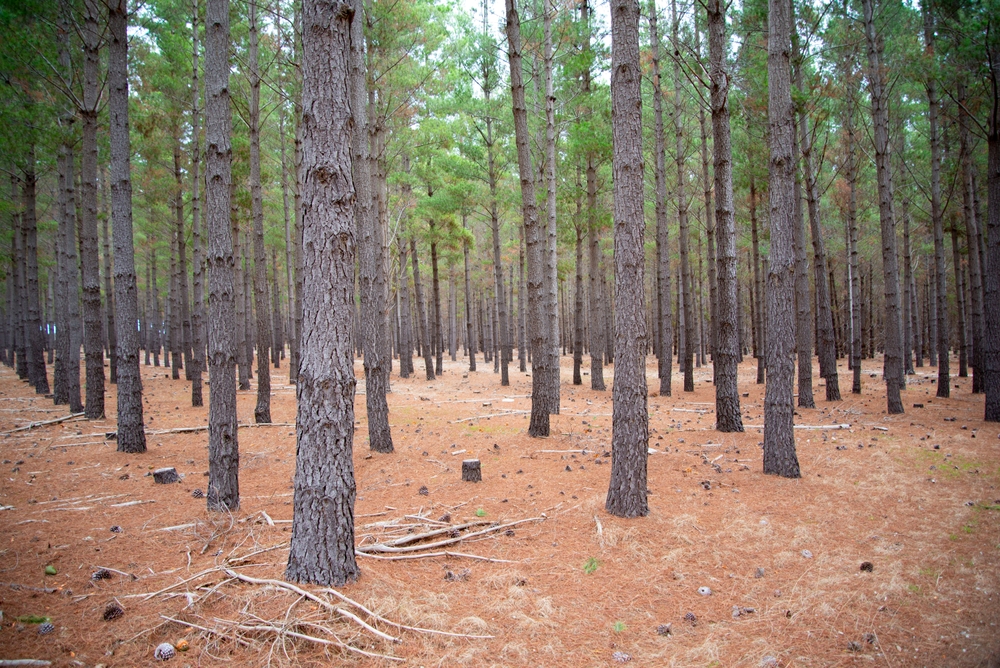
Timber cladding
Timber cladding, especially when sourced from responsibly-managed forests, stands out for its environmental benefits. Organisations like PEFC ensure that wood is sustainably sourced and provide accreditations to companies that meet their guidelines, like Mortlock Timber.
At Mortlock Timber, we hold a chain of custody certification for forest products which ensures that the timber we supply and sell are sustainable sourced.
Wood is also a renewable resource with a lower carbon footprint compared to many other building materials. This is because trees absorb carbon dioxide from the atmosphere during their growth, which means that using timber in construction effectively locks away carbon. See our blog on The Carbon Footprint of Timber.
Another aspect of timber’s sustainability is its biodegradability. At the end of its life, timber can be recycled or will naturally decompose, contributing far less to landfill waste compared to many other materials which aren’t sustainable, are much harder to recycle and contribute to deforestation.
The PEFC has regeneration and reforestation requirements for certificate holders to follow which ensures we follow responsible forestry practices to mitigate the risk of deforestation.
Composite cladding
Composite cladding, on the other hand, typically consists of a mixture of wood fibres and plastic. While this can include recycled materials, which is a positive in terms of waste reduction, the presence of plastic in synthetic composites raises concerns. This is mostly because the production of plastic is energy-intensive and often reliant on fossil fuels.
Additionally, the end-of-life disposal of synthetic composites can be problematic, as they are not biodegradable like natural timber and can contribute to landfill waste. Due to their complex composition and limited recycling methods, giving composite material a second life can be challenging.
Installation and versatility
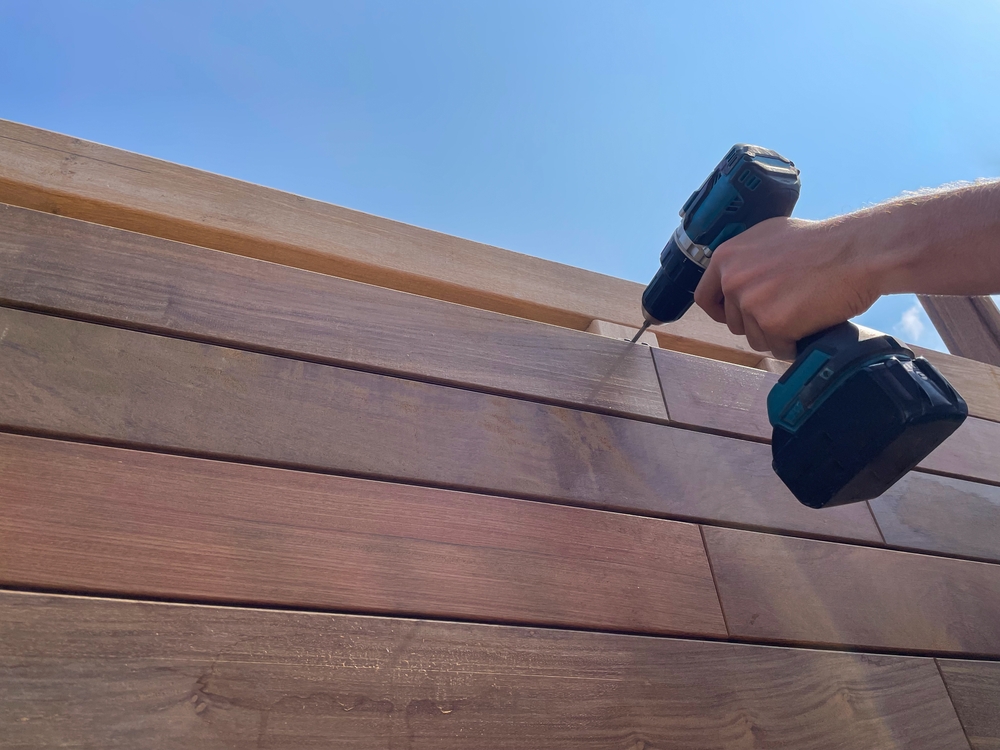
Timber cladding
Timber cladding is renowned for its straightforward installation process. It typically involves securing the timber planks to a framework or backing structure, which can be efficiently achieved with standard tools and techniques.
At Mortlock Timber, for instance, we offer innovative cladding systems like Proplank and Trendplank, designed for easy installation. These systems include features like click-in mechanisms or concealed fixings, which simplify the process and ensure a clean seamless finish.
Timber cladding also offers exceptional versatility in architectural designs. Its natural look complements a wide range of styles, from traditional to contemporary. The variety of timber species available, each with its unique colour, grain, and texture, allows architects and designers to select the perfect timber to match their vision.
Additionally, timber can be stained, painted, or left natural, providing flexibility in achieving different aesthetics. Techniques like Shou Sugi Ban can also be used to create unique, charred finishes that stand out in contemporary designs.
Composite cladding
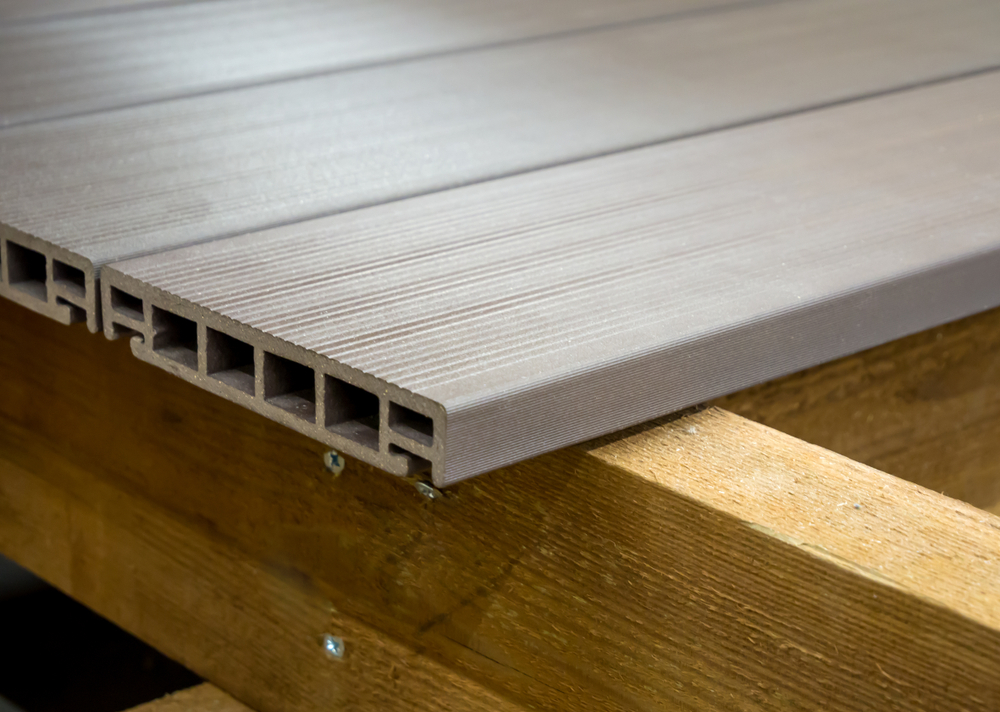
Composite cladding often comes with pre-engineered systems that can be quicker and easier to install compared to traditional timber. These systems usually include interlocking parts that fit together seamlessly. Some composite cladding systems are also designed for easy retrofitting over existing structures, which can be a significant advantage in renovation projects.
In terms of versatility, composite cladding is adaptable only to certain architectural styles, typically modern and minimalist designs. Its uniform appearance and range of colour options complement contemporary aesthetics quite well but are not ideal for the more traditional or rustic look.
It’s also important to note that some composite cladding options can expand and contract from changes in temperature which needs to be taken into consideration when installing.
Cost comparison
Timber cladding
The initial cost of timber cladding can vary widely depending on the timber species and quality. Premium hardwoods tend to be at the higher end of the price spectrum due to their durability, aesthetics, and sustainability credentials.
Special treatments or finishes, such as fire retardants or UV protective coatings, can also add to the initial cost. While more expensive upfront, the unique aesthetic and natural appeal of timber can add significant value to a property.
Composite cladding
Composite cladding generally has cheaper options available when compared to timber, making it an option for budget-conscious projects. However, the cost can vary greatly depending on the quality and features of the composite material, such as UV resistance, fire rating, and the inclusion of recycled materials.
However, if damaged, composite cladding can be harder to repair than timber and might require complete panel replacement.
Health benefits
Timber cladding
When used in various contexts, natural timber can offer several health benefits. Timber has a natural and organic aesthetic that promotes biophilic design principles. Biophilic design purposefully incorporates elements of nature into built environments which has been shown to reduce stress, improve mental health and wellbeing, as well as increasing creativity and productivity.
Natural timber offers better indoor air quality than composite timber as it doesn’t emit harmful volatile organic compounds (VOCs) like some synthetic materials can. Natural timber also has insulating properties which provide thermal comfort and can reduce the need for energy-intensive heating and cooling systems.
Additionally, having natural materials like timber in interior and exterior work and living spaces provides a sense of connection to nature. Studies have linked this connection to reduced stress levels and improved mental health.
Composite cladding
Composite timber, while offering certain practical benefits, doesn’t directly contribute to health benefits for individuals the way natural materials do. In fact, depending on composition, manufacturing processes, and maintenance, composite timber can present certain health considerations.
Some composite timber products may contain VOCs or formaldehyde which are chemicals that contribute to indoor air pollution. Prolonged exposure to high levels of VOCs and formaldehyde emissions can pose certain health risks. These health risks can be mitigated provided you opt for low-VOC composite timber products where possible and ensure adequate ventilation in indoor spaces.
While some composite timber products may be treated with fire-retardant additives, others may pose fire safety risks if they’re not properly protected or if they ignite. To minimise these risks, consider fire-resistant designs, comply with building codes and standards, implement fire protection measures, and monitor and control ignition sources.
Elevate your space with natural timber cladding
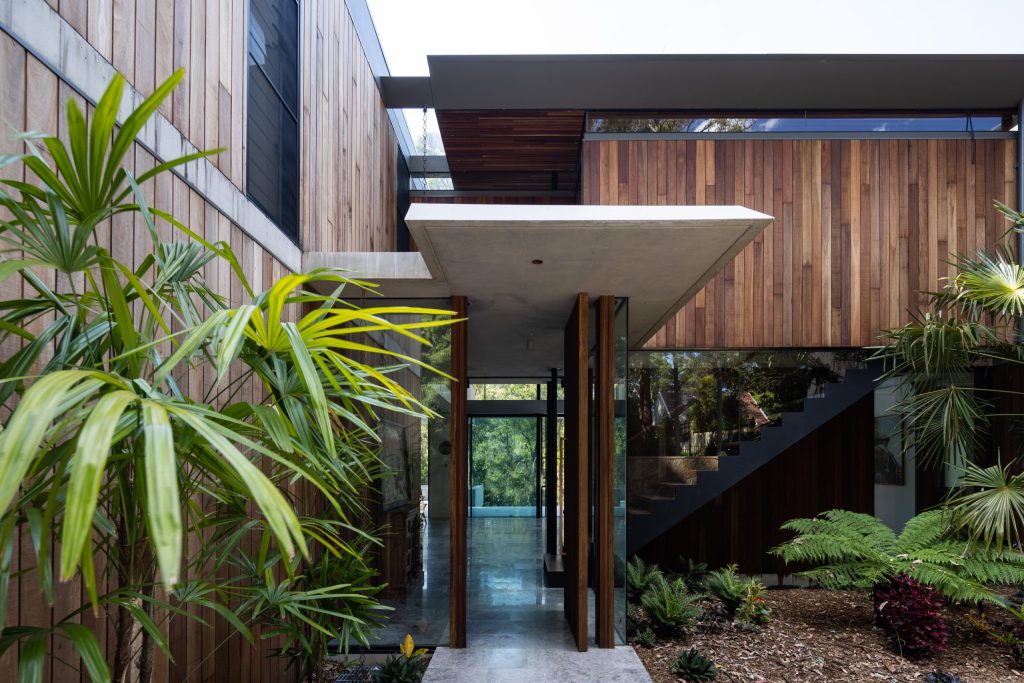
At Mortlock Timber, we proudly supply an extensive range of timber products suitable for both interior and exterior cladding. Customise your design with our variety of timber species, finishes, and profiles.
Whether you’re envisioning a rustic charm or a contemporary elegance, our expert team is here to guide you in selecting the perfect timber cladding product to bring your vision to life.
For timber battens, we recommend our Proplank profile, equipped with an advanced click-in system. If you’re looking for traditional wall cladding, our Trendplank is best for exteriors and our Satinplank profile ideal for interior applications.
Contact us today for help selecting the best natural timber cladding for your project or to request a custom quote. One of our friendly team members will be happy to assist you!
View our pricing and product guide
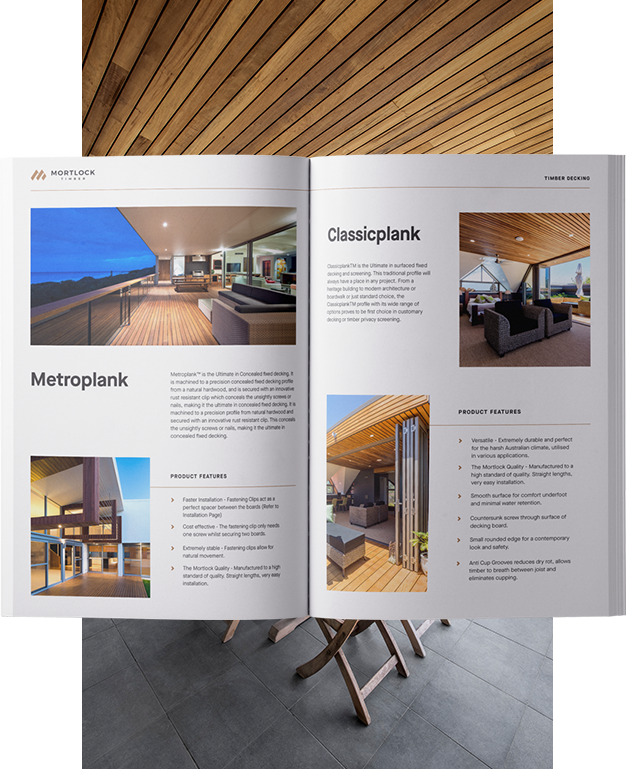
We are committed to bringing you timber products that add value and endure for years to come, even in heavy traffic and harsh weather conditions. We understand the value of efficiency when it comes to installation and keeping hardwood timber costs down. That’s why we’ve spent decades perfecting our designs to make them easier to handle, less wasteful and more efficient to install. This efficiency allows us to offer you premier products that are more cost-effective so that you can experience greater savings on timber wall costs, timber ceiling costs, timber cladding costs and timber decking costs.
Download our Pricing and Product Guide for our complete hardwood timber price list including timber decking prices, timber wall prices, timber ceiling prices and timber cladding prices.
